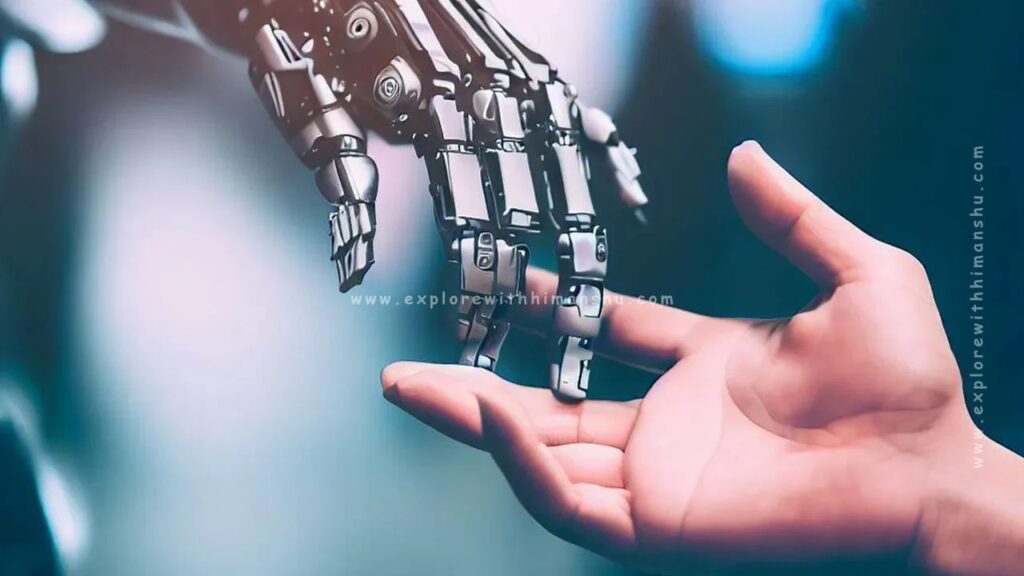Introduction:-
The 21st century has witnessed a meteoric rise in technology innovations that are reshaping the very fabric of human civilization. From Artificial Intelligence (AI) and robotics to automation and machine learning, technology is no longer just a tool but a formidable force challenging human capabilities. This blog explores how technology is beginning to outpace human performance in multiple domains and what that means for the future.

Chapter 1: The Rise of Artificial Intelligence
1.1 What Is AI?
Artificial Intelligence is the simulation of human intelligence in machines that are programmed to think, reason, and make decisions. These systems can learn from experience, adjust to new inputs, and perform tasks that traditionally required human intellect.
1.2 Historical Background of AI
AI dates back to the 1950s, with pioneers like Alan Turing and John McCarthy laying the groundwork. Today, AI systems like ChatGPT, Tesla’s Autopilot, and IBM Watson demonstrate just how advanced the field has become.
Unlock Your Future: The Ultimate Beginners Guide to Digital Marketing in 2025
1.3 AI vs Human Intelligence
AI can process vast amounts of data far quicker than humans, make decisions without emotional bias, and work 24/7 without fatigue. While humans excel in creativity and emotional intelligence, AI dominates in pattern recognition, speed, and accuracy.
Chapter 2: Automation in Jobs
2.1 Understanding Automation
Automation involves using machines or software to perform tasks without human intervention. This can range from robotic arms in manufacturing to software bots in customer service.
2.2 Industries Affected
- Manufacturing: Assembly lines now use robots for tasks like welding, painting, and quality inspection.
- Retail: Self-checkout kiosks and inventory robots are reducing human roles.
- Healthcare: AI can analyze medical images and suggest diagnoses faster than human doctors.
- Finance: Algorithms manage portfolios, detect fraud, and automate customer support.
2.3 Job Displacement vs. Job Creation
While automation is replacing many low-skill jobs, it is also creating new roles in AI training, data analysis, and robotics maintenance. The key is reskilling and adapting.
Chapter 3: Robotics: The New Workforce
3.1 Advancements in Robotics
Modern robots can perform complex tasks, interact with humans, and adapt to their environments. Boston Dynamics’ robots demonstrate agility and decision-making never before seen.
3.2 Robots in the Workplace
Robots are being deployed in warehouses, hospitals, restaurants, and even homes. They are faster, more reliable, and less costly in the long run.
3.3 Ethical Implications
The widespread use of robots raises ethical questions about privacy, employment, and human rights. Who is responsible when a robot makes a mistake?
Chapter 4: Machine Learning and Big Data
4.1 What is Machine Learning?
Machine Learning (ML) is a subset of AI where machines learn from data to improve their performance. It powers recommendation engines, voice assistants, and even self-driving cars.
4.2 Big Data as Fuel
Data is the new oil. From social media to IoT devices, we generate terabytes of data daily. ML algorithms analyze this data to find patterns and predict outcomes.
4.3 Human Limitations
Humans cannot analyze large datasets efficiently. ML algorithms can process and derive insights from massive volumes of data in seconds.

Chapter 5: Human-Centric Skills vs Machine Capabilities
5.1 Creativity and Empathy
While machines can write articles, compose music, or generate art, human creativity stems from emotion, experience, and consciousness—areas where machines still fall short.
5.2 Decision Making and Emotional Intelligence
Humans factor in ethics, emotions, and social norms. Machines, on the other hand, rely purely on data and logic.
5.3 Augmentation vs Replacement
The future may not be about replacement but augmentation—using machines to enhance human capabilities.
Chapter 6: Education and the Digital Divide
6.1 Need for Tech-Based Education
With tech overtaking human roles, education must evolve. Coding, data literacy, and digital skills are essential.
6.2 Reskilling the Workforce
Governments and organizations must invest in upskilling workers to remain relevant.
6.3 Digital Divide Challenges
Access to technology remains uneven. Bridging this gap is essential to ensure everyone benefits from technological progress.
Chapter 7: The Future of Work
7.1 Hybrid Work Models
Remote work, powered by digital tools, is here to stay. Future offices will blend humans and AI systems.
7.2 Freelancing and the Gig Economy
Platforms like Upwork, Fiverr, and Freelancer have changed how people work. AI tools assist freelancers in productivity and delivery.
7.3 Entrepreneurial Opportunities
Technology enables anyone to start online businesses—from blogging and e-commerce to digital marketing and SaaS platforms.
Chapter 8: Technology in Daily Life
8.1 Smart Homes
From Alexa to smart thermostats, technology is simplifying our lives.
8.2 Healthcare
Wearables track health metrics, AI diagnoses illness, and telemedicine connects patients to doctors.
8.3 Transportation
Autonomous vehicles, drones, and AI-powered logistics are redefining mobility.
Chapter 9: Risks and Challenges
9.1 Privacy and Surveillance
Tech can be invasive. Data leaks, surveillance capitalism, and digital tracking are growing concerns.
9.2 Cybersecurity Threats
More tech means more vulnerabilities. Ransomware, phishing, and hacking threaten individuals and corporations alike.
9.3 Dependency on Technology
Over-reliance can make societies vulnerable. What happens if the grid goes down or an AI system fails?

Chapter 10: Embracing the Inevitable
10.1 Human-AI Collaboration
The goal should not be competition but collaboration. AI can be our most powerful ally.
10.2 Building Ethical AI
Transparent algorithms, unbiased datasets, and accountability are essential.
10.3 Preparing for Tomorrow
We must foster a mindset of lifelong learning, adaptability, and innovation.
Conclusion: The Human-Tech Symbiosis
The narrative of “Technology Beats Humans” is not a dystopian threat but a wake-up call. Technology is accelerating at a rate never seen before, and while it may surpass human abilities in many areas, it also presents a monumental opportunity. The future belongs to those who understand, embrace, and leverage technology ethically and intelligently.
Human potential, when empowered by technology, can lead to a future of abundance, equity, and creativity. Instead of resisting the tide, we must learn to ride it—because in the end, it’s not man vs. machine, but man with machine that defines the next era of evolution.


